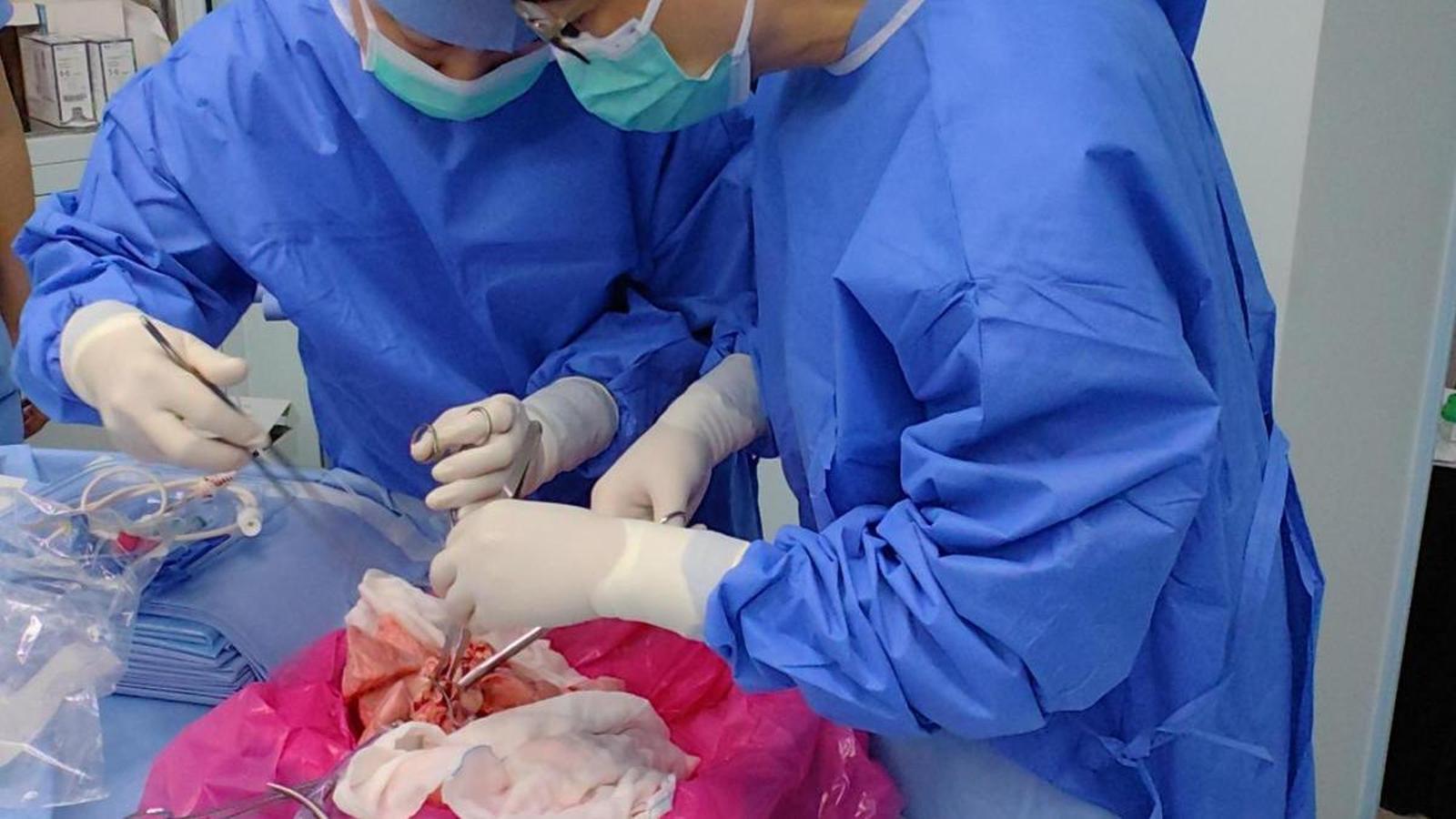Scientific milestone in China: a human receives a pig lung for nine days
The experiment ended because the body ended up rejecting the organ, but it represents a first step towards performing a transplant that has never been performed before.


BarcelonaIn 2022, American surgeons successfully transplanted a genetically edited pig's heart into a man, who survived for approximately two months. In 2024, also in the United States, the same procedure was performed on a kidney, also extending the life of a 62-year-old man by two months. And the same year, Chinese doctors grafted a transgenic pig liver into a brain-dead person as part of a clinical trial. Now, researchers at Guangzhou Medical University (China) have taken a further step towards advancing interspecies transplants (xenotransplants): they have managed to graft a laboratory-modified pig lung into a human that was functional for a period of nine days. The team of Chinese thoracic surgeon Jianxing He and the Chinese company Clonorgan Biotechnology led the research, published this Monday in the journal Nature Medicine.
The researchers transplanted the left lung of a gene-edited pig into a 39-year-old human (they did not specify if it was a man or a woman) who had been declared dead due to a cerebral hemorrhage. The pig from which the lung was obtained was a Bama Xiang pig. It was a 22-month-old male, weighing 70 kg, and was raised in a strict biosecurity system by Clonorgan Biotechnology, with rigorous disinfection protocols, controlled sources of food and water, and routine monitoring of pathogens to minimize risks.
The extracted lung was subjected to CRISPR gene editing in six genes. This technique, which allows precise DNA cutting, was used to remove molecules inherent to pigs that can cause rejection in the human body (GGTA1, B4GALNT2, and CMAH) and to introduce genes that encode human regulatory proteins, key to reducing coagulation problems and modulating the M5 response. CRISPR also inactivates possible viruses of porcine origin and controls the size of the organ once inside the human body.
The authors monitored lung function and the response of the human immune system and discovered that the lung was not immediately rejected by the immune system and maintained viability and functionality for nine days. However, signs of lung damage were observed 24 hours after the operation, and signs of organ rejection were observed on days 3 and 6 after surgery. With these responses, the Chinese research team ended the experiment on the ninth day after the graft. However, they emphasize that these results may represent the first documented case of interspecies lung transplantation and have potential future clinical applications.
Specific Challenges
The first documented xenotransplant in the world dates back 120 years, but it wasn't until a few decades ago that it was seriously tested to become a therapeutic option for humans. Pigs are the most commonly used animal to test the procedure, among other reasons, so that their patients could benefit from the benefits of the procedure.organs are similar in size to those of humans and their DNA can be modified to make them more compatible with the human body. It is one of the most complex medical procedures in existence, and the current survival rate is very low, but the scientific community has intensified research into this option, which they see as a potential solution to the shortage of human organs for transplantation.
The lung presents particular challenges compared to other solid organs due to its anatomical and physiological complexity. Unlike kidneys or the heart, high blood flow and exposure to external air make the lung especially vulnerable to immune attack and ischemia-reperfusion injury, which accelerates graft failure. "This makes further improvements in genetic engineering strategies necessary," they admit in the study. Another key challenge of lung xenotransplantation is the high risk of infection, since direct contact of the lung with ambient air increases susceptibility to pathogens; therefore, microbiological surveillance must be extreme throughout the process.
